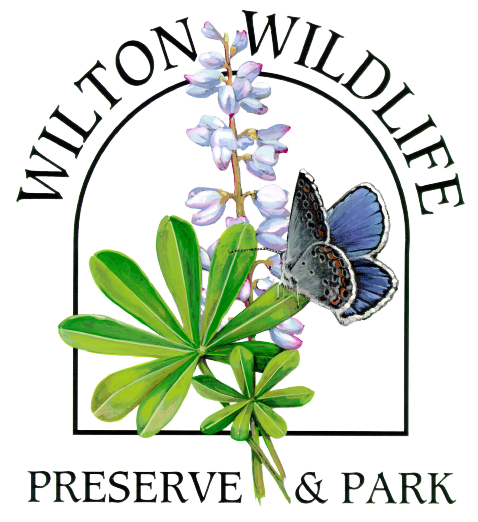Frosted Elfin Butterfly: Threatened
Due to the frosted elfin’s dependency on the oak savanna and pine barren ecosystem, habitat destruction has led to a decline in the frosted elfin’s population size. This butterfly depends on the same habitat and wild blue lupine as the endangered Karner blue butterfly.
Photo by Mike Hale
Description
The uppersides of the wings of both sexes are brown in color. The male has a long oval dark spot on the leading edge of the forewing. On the undersides of the wings of both sexes, the postmedian line of the forewing is irregular and that of the hindwing is faint. The hindwing has a submarginal black spot above the tail. Its wingspan is 1” to 2.5”.
Life Cycle
The females lay eggs on its host plant, the wild blue lupine. In other parts of its range, the frosted elfin also utilizes wild blue indigo. Once hatched, the larvae feed on lupine flowers and the developing seedpods. Larvae are present for roughly three weeks, consuming the lupine flowers and seedpods as they move down the plant to pupate. The pupae remain throughout the summer and overwinter in loose cocoons in the litter beneath the wild blue lupines. Since they overwinter as a cocoon, they emerge early in the spring. There is only one life cycle per year. In this area, they are seen in early May to early June. The males are highly territorial and will position themselves at the edges of their habitat or along pathways to the habitat.
Photo by Howard Lester
Diet
The caterpillar of the frosted elfin butterfly eats wild blue lupine. On Long Island and further south, caterpillars may eat wild indigo instead. Adult frosted elfin butterflies eat nectar from a variety ofearly spring flowers.
The frosted elfin’s use of the wild blue lupine complements the Karner blue butterfly's. The frosted elfin larvae feed on the flowers and seedpods and the Karner blue larvae feed on the leaves.
Habitat
The frosted elfin butterfly is found in oak savanna and pine barren habitats with wild blue lupine or wild blue indigo present. The wild blue lupine is a perennial plant that grows in dry, sandy soils, preferring open or partially shaded areas. The male frosted elfins are highly territorial of these areas and will position themselves at the edges of their habitat or along pathways to the habitat. Meadows with wild blue lupine were historically created and maintained by natural forces, such as wildfires. Human impacts including fire suppression have resulted in habitat loss. Our landowning partners' habitat management is done through mowing on a regular basis to prevent trees from growing in open meadow and shading out wild blue lupine.
Why are they threatened?
One reason for the frosted elfin butterfly's population decline is loss of habitat. Without the natural wildfires that occurred in the dry, hot meadows, trees grow and shade out the wild blue lupine which is the only food source for these butterflies. Along with fire suppression, their meadow habitat is being lost and fragmented due to commercial and residential development as well as land clearing for agriculture. The frosted elfin is also threatened by climate change. As our climate becomes warmer and more unstable, species move northward which affects the wild blue lupine which then affects frosted elfin populations. Rising deer populations also play a role in the decline of the frosted elfin butterfly. Deer eat the wild blue lupine flower stalks where female frosted elfin lay their eggs. This can severely decrease the numbers in a generation of frosted elfins.
What is being done?
At Wilton Wildlife Preserve & Park, we support the work of our partners, the New York Department of Environmental Conservation, the Town of Wilton, Saratoga County, and the Nature Conservancy who are managing the protected lands in the Saratoga Sandplains ecosystem. Their work to ensure the health and growth of the blue lupine creates stable habitats where the frosted elfin can thrive. Due to the frosted elfin's threatened status, we support the work of our partners to establish new habitats and protect existing ones from development.
What can you do?
The best way to protect the frosted elfin butterfly is to support organizations and efforts that work for their conservation. At Wilton Wildlife Preserve & Park, we support the work of our landowning partners, to protect, manage and restore these ecosystems and welcome we volunteers to help our efforts!
Opportunities to get Involved
We welcome spring, summer, and fall volunteers that can help with seed picking of the blue lupine and other important plant species, planting of the blue lupine seeds, and habitat management in the meadows. Email: info@wiltonpreserve.org
To access more information:
Download our Frosted Elfin brochure here.
Para español, haga clic aquí.




